|
 |
|
| |
| Wildlife
Orphanage, Inc., is proud to announce its new, expanded
wildlife service! |
| |
|
PERMANENT, HUMANE SOLUTIONS TO WILD ANIMAL
INTRUSION
CUSTOMER CONSULTATION:
- Discuss wildlife problem/intrusion in detail
- Thoroughly inspect area to locate, assess, and identify
damage or potential for future problems
- Identify all wild animal areas of entry
- Provide a detailed description of the repair work/services
required to resolve wildlife conflict permanently
- Provide a written estimate detailing services
- Explain warranty policy
SERVICES PROVIDED:
- Species’ specific techniques employed for
removing wild animals
- Infant animals hand removed from structure and
reunited with adult female
- Deodorize area to minimize attraction
- Animal proofing of all entry holes and potential
problem areas—including chimneys, exhaust vents,
roof vents, plumbing vents and mats
- Wildlife proofing of sheds, decks, porches and other
structures
- Restoration
COMMON PROBLEMS:
- Roof vents are often constructed of light weight
materials easily manipulated by wild animals
- Uncapped chimneys, similar to a hollow tree in
the eyes of an opportunistic wild animal, provide
a perfect environment for which to raise young
- Plumbing vent mats may be easily ripped open by
persistent wild animals
- Bathroom and stove exhaust vents serve as ideal
nesting areas for birds and/or other small mammals
- The wooden edge of the fascia and roof area can
be gnawed upon, thus creating an entry way for opportunistic
wildlife searching for suitable den sites
- Sheds, porches, decks and other outdoor structures
may serve as nesting areas for wild animals
- Soffit/roof intersections are often times easily
manipulated by animals providing easy access to attic
spaces
- Opportunistic wild animals may cause roof damage,
water damage, destroy duct work, stain ceilings, create
a fire hazard by gnawing on electrical wires, damage
attic insulation, trigger an allergic reaction, and/or
disturb the family while sleeping
WHY CHOOSE WILDLIFE ORPHANAGE, INC.:
- Licensed Indiana Wild Animal Control Operators
for over six (6) years
- Professionally trained
- Written guarantees
- Humane and permanent solutions to wildlife conflict
situations
- Fully insured
- Dependable
- Committed to customer satisfaction & wildlife
welfare
- Strict health and safety standards
- Full service
- 10% Senior discount
- Licensed Indiana Wildlife Educators and Rehabilitators
for over eight (8) years
Wildlife Orphanage, Inc. values its reputation as an
ethical organization that provides non-lethal solutions
to wildlife intrusions of residential, commercial, and
industrial properties in the following Indiana counties:
- La Porte
- St. Joseph
- Elkhart
- Lake
- Porter
The strategies employed by our professional technicians
provide minimal distress to wild animals and property
owners alike.
In keeping with our mission to provide community support
and education on methods for resolving wildlife conflicts
permanently and humanely, lethal control is never utilized
or recommended. Accordingly, wild animals are not relocated
due to the high mortality rate for translocated mammals
and their offspring. |
| |
|
|
|
| |
| |
| Purdue
University - Fur Trapping 101??? |
| |
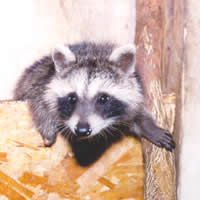 |
| |
Photo
Credit: Wildlife Orphanage, Inc. |
|
 |
For
over 20 years, Purdue University has supported the trapping
of wild animals through its participation in the Furbearer
Management Course offered annually in Northeastern Indiana.
Their endorsement of this course can only be interpreted
as explicit approval of fur trapping, thereby diminishing
Purdue's stature and reputation within the world of
academia.
In 2002, Purdue University refused to end this inappropriate
relationship with the fur trapping industry after an
appeal was made by Wildlife Orphanage, Inc. This University
failed to provide supporting documentation rationalizing
its participation and has been unwilling to respond
to any of the serious ethical issues below: |

|
| |
 |
| |
This course traps and
kills animals outside the state sanctioned trapping season
The Furbearer Management Course, as advertised in the 2001-2002
Indiana Hunting & Trapping Guide, claims to teach "trappers
wise use and respect for wildlife resources." However, according
to the dates on the course application form, animals killed
during this course are taken outside the state sanctioned
trapping season and the class therefore requires an "educational" special
use permit. It appears ethically questionable that the very
same class that teaches "wise use and respect for wildlife
resources" requires the taking of animals outside of the
normal trapping season. |
| |
 |
| |
| This
course requires membership in Fur Takers of America |
| |
 |
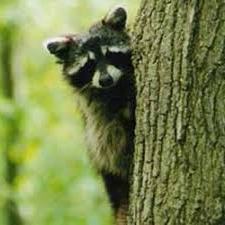 |
| |
Photo
Credit: Humane Society of the U.S.
|
|
According
to Brian Mac Gowan, Extension Wildlife Specialist, all students
enrolling in this course MUST become a member
of the Fur Takers of America (FTA). Mandatory membership
in an organization as a condition of taking a continuing
education course is unusual and offensive, especially given
that FTA's purpose, in part is to "promote interest in…the
trapping of fur bearing animals." Although the legality of
this issue is still in question, Purdue's role in increasing
the membership of an organization whose mission is to trap,
injure and kill animals is entirely inappropriate.
Leg hold traps, used in this course, are deemed inhumane
by the American Veterinary Medical Association, American
Animal Hospital Association, World Veterinary Association,
and the National Animal Damage Control Association.
|
 |
|
Recreational
trapping has been deemed inappropriate by a vast majority
of the population in this country and steel leg-hold traps
have been banned or severely restricted by more than 80 countries
and eight states in the US. There are no traps deemed more
indiscriminate than the snare trap, yet this trap is currently
condoned and advocated by Purdue University through its association
with the Furbearer Management Course.
Conibear traps are also being advocated during this course,
and according to M. Novak, "Traps and Trap Research," Wild
Furbearer Management and Conservation in North America, North
Bay: Ontario Trappers Association, 1987, these so-called
kill traps "kill less than 15% of the trapped animals quickly,
and more than 40% die slow, painful deaths as their abdomens,
heads of other body parts are crushed." The article also
stated that Conibear traps are also "notoriously indiscriminate
and have been shown to capture 2 non-target animals per target
animal." |
| |
 |
| |
Appropriate instruction has been, and could be again,
provided to course participants without killing of animals
According to a source at the Indiana Department of Natural
Resources (IDNR), in previous years, this course was conducted
without the unnecessary killing of wildlife. Supposedly,
round plastic hoops were utilized to represent trap sets.
If an animal print was in the center the following morning,
a successful "take" was scored. Considering the claims made
surrounding the purpose of this course - teaching of "wise
use and respect for wildlife"- this would seem the only appropriate
method of training available.
The 2001 Furbearer Management Course resulted in the deaths
of 30% of the animals trapped and one of the animals killed
was an otter, a protected species. |
| |
 |
| |
| Trapping
is not an effective tool for controlling wildlife over-population |
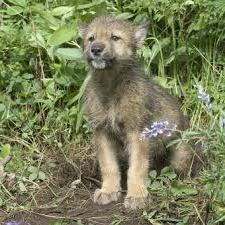 |
| |
Photo
Credit: Fur-Bearer Defenders
|
|
 |
|
Predator
species aren't able to significantly over-populate since
their birthing and survival rates are predetermined
by the availability of prey species. There are no current
scientific studies that support the notion predators
truly "over-populate" as predator species and their prey
are naturally self-regulating.
Wild Furbearer Conservation and Management in North
America (Novak et al, 1987) provides data which shows
that when raccoons exhibit low reproductive rates, you
can trap out as much as 49% of the population and they
will rebound back to their former level by the next breeding
season. When raccoons exhibit high reproductive rates
(typical after a trapping program has been implemented),
you can trap out as much as 59% of the population and
the population will replace itself by the next birthing
season. These figures clearly illustrate why trapping
does not control wildlife populations. |
| |

|
| |
 |
| |
Trapping
is not an effective tool for controlling wild animal
diseases
The Center for Disease Control does not recommend the
arbitrary killing of raccoons as a strategy to avert the
rabies threat. As summarized by Dr. John Debbie, New York
Health Department, "Trapping to control rabies is considered
to be an exercise in futility in the face of a rabies outbreak,
because the disease itself will limit the population, and
clinically rabid animals are rarely caught in traps (Rabies
Control in Wildlife, 1983)."
Trappers boast on controlling other diseases as well yet
there is no scientific literature available to support
these claims. As a matter of fact, this practice most likely
increases the presence of disease as trapping removes individual
animals, typically healthy specimens, while the remaining
animals have augmented litter sizes. Consequently, these
young animals, lacking a natural immunity, increase the
susceptibility of the existing population to further disease
outbreaks. |
|
 |
| |
| This
course is not being taught for the purpose of educating "nuisance" wild
animal control operators |
| |
 |
 |
| |
Photo
Credit: Humane Society of the U.S.
|
|
According
to the course agenda, only 90 minutes of course instruction
was allocated to "nuisance wild animal" - that
being moles - and according to Mr. Brian MacGowan's e-mail
of July 13, 2001, "The course is not geared towards that
group [nuisance wild animal control operators].... Essentially,
it comes down to this, if you are wanting more information
about how to trap furbearers using foot hold traps, body
grip traps and snares, then this course will definitely
be helpful to you. If you are looking for how to get a
raccoon out of an attic, etc., then it probably won't meet
your needs." Mr. MacGowan also stated when asked what percentage
of this course is allocated to "nuisance" animal removal: "Not
much."
It is equally important to note that according to the
2001 & 2002 Furbearer Management Course annual reports,
there was NOT ONE fox or coyote captured even though these
species are primarily blamed for livestock predation. |
 |
| |
 |
| |
This
trapping course is not effective in managing protected
and/or endangered wildlife
The recognition given to trapping for the comeback of
endangered or threatened wildlife needs to be put in
proper perspective, especially as it pertains to bobcat.
Trapping is not responsible for the bobcat's return to
Indiana and the reason IDNR is trapping and monitoring
these magnificent creatures to-date, is to determine
when populations are healthy enough to support a state
sanctioned trapping season. It is also important to note
that the cruel trapping devices used in teaching the
furbearer management course cannot be legally used on
threatened or endangered wildlife.
This statement is further evidenced by Purdue's own
involvement in the much heralded Indiana river otter
reintroduction program wherein scores of wild otter captured
in Louisiana using leg-hold traps were shipped to Purdue
University School of Veterinary Medicine for treatment
of serious injuries to the feet and teeth – treatment
(incidentally) that was quite extensive contrary to news
reports and press releases. In truth, the majority of
otter reintroduced to Indiana suffered significant injuries
as a result of the trapping and transport project. According
to records obtained from Purdue's School of Veterinary
Medicine, most – if not all – of the animals
sustained injuries such as lacerations requiring surgical
closure and amputation of one or more toes, broken teeth
requiring root canals, endodontic procedures or multiple
extractions, and some of these endangered animals died
during their veterinary evaluations and treatments.
|
| |
 |
| |
This
course, currently offered through the Center for Lifelong
Learning (CLL), conflicts with the CLL mission statement
The Vision and Mission Statement for the CLL at Purdue
University states that the CLL "contributes significantly
to the University's learning mission to attain and
preserve excellence in learning through programs of superior
quality
and value in every academic discipline." This Mission Statement
also states that the goal of the CLL is to "meet the learning
needs of an educated citizenry."
Can one honestly believe that this Furbearer Management
Course is conducive to this expressed purpose? This course
cannot be considered either "superior quality" or "academic
discipline" due to subject matter and lack of faculty involvement.
Addressing the learning needs of an "educated citizenry" with
a course the majority of the populace would not advocate,
does not show respect or an interest in those needs. Additionally,
this course fails to address the issue of "strengthening
Indiana's economy" as evidenced by a letter dated 2/28/97
from Terry M. Mansfield, Chief, Wildlife Management Division
of the California Department of Fish and Game wherein he
stated, "The average income per successful trapper in 1995-96
was $240.00." Finally, the CLL implies that it is progressive
and with the times, yet its support of this antiquated
practice clearly shows otherwise. |
| |
 |
| |
Purdue
University offers two units of continuing education credit
upon completion of this course
Purdue University provides additional support to the trapping
of wildlife by awarding students two units of continuing
education credit upon completion of this course. According
to Lucia Anderson, Public Records Officer and Director,
Business Managers, the only funds received by Purdue for
the administration of this course come directly from Fur
Takers of America in the amount of $40 per participating
student. Given the average number of students enrolled
annually, Purdue encourages and participates in these objectionable
practices for roughly $1,700 a year. Are there not better
ways in which to raise this rather insignificant amount
of money? |
| |
 |
| |
| |
| This
course is offered solely for the purpose of teaching "RECREATIONAL" fur
trapping |
| |
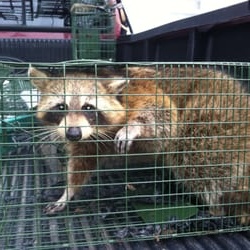 |
| |
Photo Credit:
Marshall County Shelter
|
|
 |
If
this course was truly being provided for population control, "nuisance" wild
animal control, wild animal disease control, or for the
protection of endangered and/or protected
wildlife, the following areas of study listed on the course
agenda would be unnecessary: Public perceptions of trapping
and dealing with the media; Trapping as a small business:
Record keeping and tax preparation; Skinning equipment
and care.
A course genuinely focusing on wildlife management would
have no need for time allocated to grading pelts and marketing
fur. Additionally, no furs taken during this course may
be sold or kept by any of the participants. This is a waste
of the same natural resources supposedly coveted by conservation
groups and does not coincide with the mission of conservation. |

|
| |
 |
| |
| Purdue's
support of this course acts as tacit approval of fur trapping
and diminishes it's credibility as an institution of higher
learning |
| |
Trapping,
a cruel and ineffective form of "wildlife management," is
perpetuated by an antiquated funding system and insidious
relationships developed between state wildlife agencies
and universities dependent upon financial assistance for
the promotion of wildlife "use." The sole reason trapping
continues today is because it is conveniently conducted
outside the view of the general public, thus escaping public
scrutiny. The rationalization behind the "need" for trapping
is based upon a plethora of misleading arguments which
need to be challenged by both faculty members and Purdue
University as a whole.
|
 |
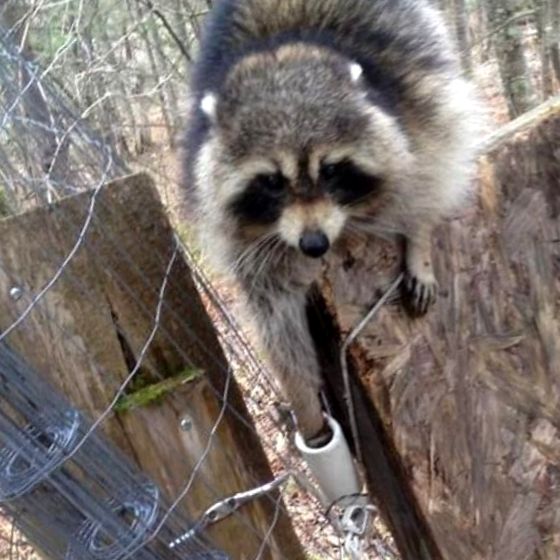 |
| |
Photo
Credit: Tribe of Heart
|
|
| |
 |
| |
Purdue
should end this inappropriate relationship with the fur
trapping industry |
| |
 |
| |
Photo Credit:
Humane Society of the U.S. |
|
 |
The majority of Purdue's constituents do NOT support
or condone the promotion of trapping animals as an activity
worthy of university sanction and their reaction to learning
about this issue is overwhelmingly negative. Purdue University,
a university funded in part by tax payer dollars, should
withdraw all levels of participation in this course and
help guide this state to a new, kinder, more humane ethic.
Purdue's approval of the actions promoted by this course
challenges its stellar reputation and diminishes its
academic credibility. If you agree that Purdue's involvement
in this course should end, please express your disapproval
by contacting University officials listed below. |

|
Phone calls
or concise letters respectfully requesting Purdue to reconsider
its controversial involvement with the Furbearer Management
Course carry more impact than faxes or emailed messages.
However, any form of feedback from constituents and the
public sector to University officials pertaining to this
issue will be instrumental in initiating changes.
Martin C. Jischke, President
Purdue University
1031 Hovde Hall, Room #200
West Lafayette, IN 47907
765/494-9708
mcjischke@purdue.edu
Victor Lechtenberg, Dean of Agriculture
1140 Agriculture Administration Building – Room 114
West Lafayette, IN 47907
765/494-8391
vll@purdue.edu
*Purdue Alumni should contact:
Dr. Lawrence Preo, Director, Purdue Alumni Association
101 North Grant Street – PMU
160
West Lafayette, IN 47906-3574
800/414-1541
paa@purdue.edu
|
| |
| Back To Top |
|
|
